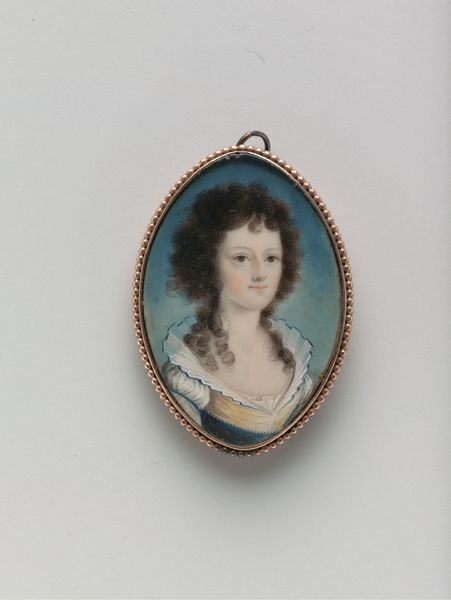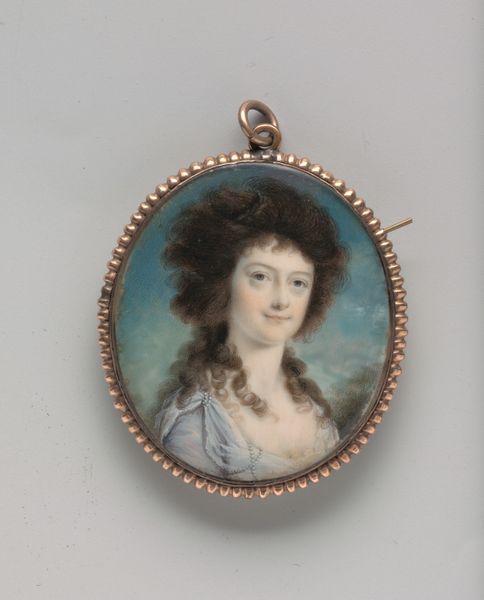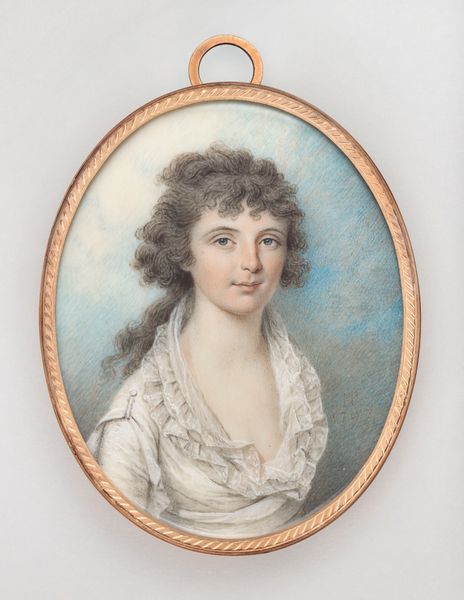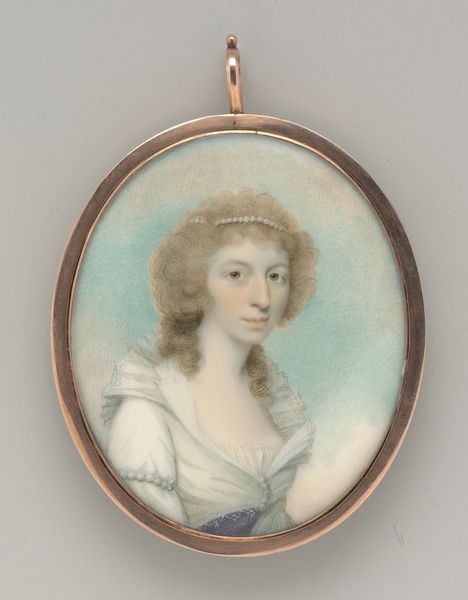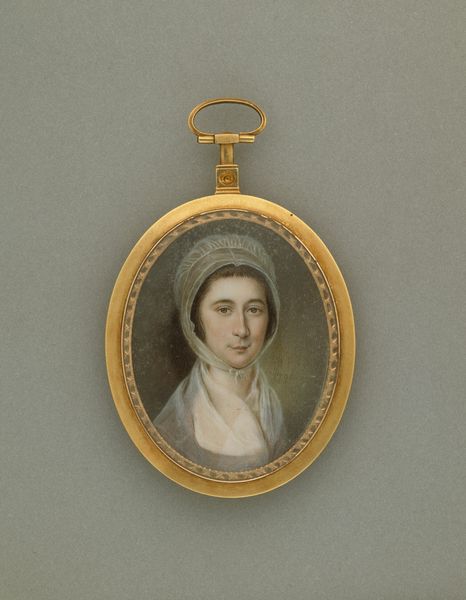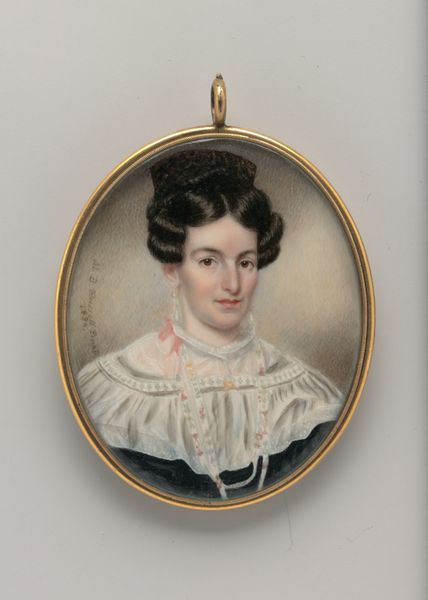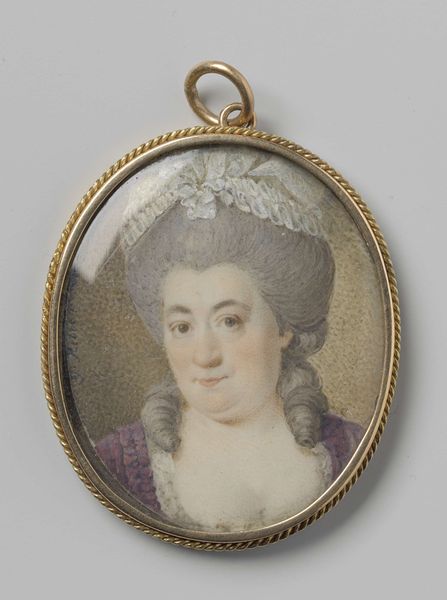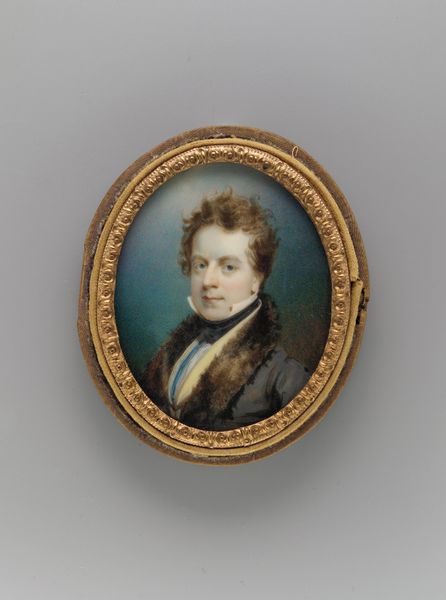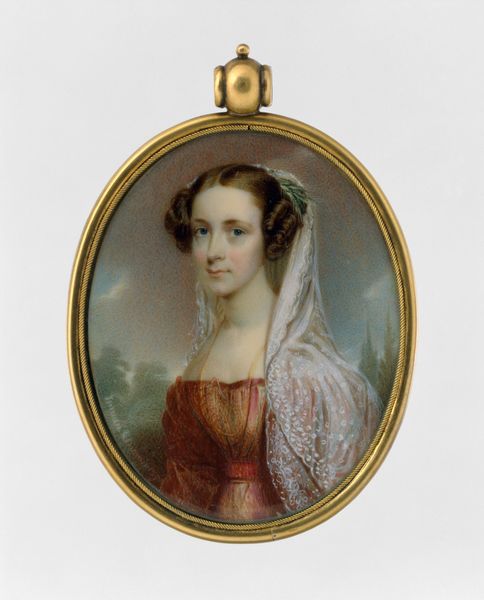
watercolor
#
portrait
#
neoclassicism
#
watercolor
#
watercolour illustration
#
academic-art
#
miniature
Dimensions: 1 1/2 x 1 1/4 in. (3.8 x 3.1 cm)
Copyright: Public Domain
Curator: This watercolor miniature presents Mrs. William Few, Catherine Nicholson, painted in 1787 by John Ramage. Editor: There’s a certain serenity about it, a quiet stillness that radiates from her gaze and soft coloring. Curator: Indeed. Consider the social context of portrait miniatures. This wasn't just art; it was a commodity, a marker of status and connection within the upper classes of late 18th-century society. Editor: Absolutely. Structurally, the oval shape, the framing of pearls – it all contributes to a sense of refined elegance and containment. Curator: Note that it would be worn as jewelry. Each brushstroke required incredible skill, particularly given the scale. Editor: Let's also reflect on how these miniatures were perceived and used. As tokens of affection or reminders of absent loved ones. This was an object meant to be carried close. Curator: Ramage, an immigrant from Scotland and successful silversmith in New York, was tapping into a culture craving the outward display of wealth. How fascinating, the confluence of immigrant ambition, artistic talent, and market forces! Editor: Yes, looking at the materiality of the pearls brings us into her world. Do these objects and shapes suggest certain ideologies? Absolutely. And more broadly it indicates societal ideals. Curator: These were portable emblems of power, reflecting economic realities, and changing colonial tastes. Editor: So we see it as both art and social history. It encapsulates ideas about wealth, status, beauty, and perhaps most interestingly, about interpersonal relationships. Curator: It brings to life this era where craft was intrinsically tied to commerce and intimate connections were materially manifest. Editor: Indeed, the interplay between image, object, and intention is what makes this piece so rich.
Comments
No comments
Be the first to comment and join the conversation on the ultimate creative platform.
